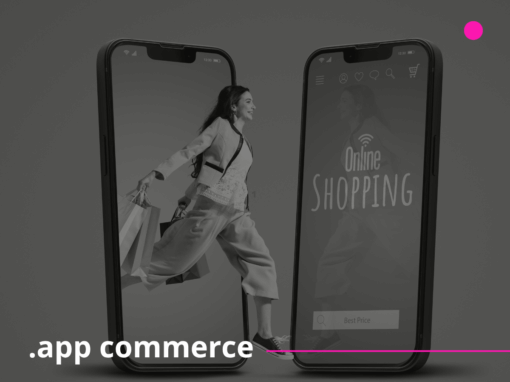The saying “knowing your consumer is the key to success” has never been truer. In an increasingly saturated digital market, where competitors are just a tap away, the ability to deliver a unique and relevant shopping experience has become a fundamental competitive advantage. In the world of App Commerce, this principle reaches a new dimension, turning a simple purchase into a lasting relationship.
It’s not just about migrating your store to an app, but about creating a shopping journey that adapts to each user’s needs and desires. When done strategically, personalization increases perceived brand value, boosts customer satisfaction, and drives crucial metrics such as conversion rate, average order value, and ultimately, return on investment (ROI).
The New Era of Personalization: From E-commerce to App Commerce
While traditional e-commerce has already used personalization for some time, App Commerce takes this strategy to a more intimate and dynamic level. A shopping app, installed on the user’s mobile device, offers a direct and continuous communication channel. It’s always present, enabling companies to collect real-time data and quickly respond to consumer behavior.
Personalization in App Commerce goes beyond simply showing products based on browsing history. It’s a holistic strategy that covers the entire experience—from first contact to post-purchase. The goal is to create an environment where the customer feels recognized and valued, as if the app was built exclusively for them. And to achieve this vision, intelligent data collection is the starting point.
Challenges and Strategies for Data Collection
Even in the data-driven era, many companies still fail to gather concrete information about their customers. The good news is that digital channels—especially apps—offer a powerful arsenal of tools to do so, without relying on lengthy and exhausting surveys.
The challenge lies in collecting data without invading the user’s privacy or overwhelming them with requests. Balancing business needs with customer convenience is crucial. A strategic and gradual approach is the key to success.
1. Progressive Sign-Up and User Experience (UX)
The first point of contact is registration, and long questionnaires can be a barrier, often leading to user drop-off. The solution is adopting progressive sign-up. Start with the minimum required for browsing and purchasing. Then, encourage the completion of more information along the journey by offering clear benefits in return.
Targeted messages, push notifications, and strategic pop-ups can request information such as birth dates (to send a coupon) or interests (to recommend specific products). This approach respects the customer’s pace while showing that the company values their time and trust.
2. Incentives and Rewards
Data collection can become a win-win “negotiation.” To overcome resistance to sharing information, offer incentives. Discounts, loyalty points, access to exclusive products, or gifts are excellent trade-offs.
The key is to ensure the benefit is relevant and valuable to the target audience. For instance, if the company wants to understand makeup buying habits, a discount on beauty products will be far more effective than a generic coupon.
3. Social Media Integration
Social media integration provides a quick and practical shortcut to obtain demographic, interest, and behavioral data. By allowing users to log in with a social account, companies gain access—through proper permissions—to a wealth of information that can be used to personalize the experience.
This strategy not only makes sign-up easier for the user but also delivers valuable insights into their profile and connections, enabling more targeted and personalized campaigns.
4. Continuous Feedback and Active Listening
Listening to what consumers have to say is by far the best way to understand their needs and desires. Encourage ongoing feedback through post-purchase surveys, product reviews, or direct support channels.
Active listening provides valuable input for creating personas, representations of your ideal customers. With well-defined personas, companies can refine actions, campaigns, and even product development, ensuring that supply aligns with demand.
Personalization in Practice: The Shopping Journey in App Commerce
Once a company has the data, the challenge is to turn it into concrete actions that improve the shopping experience. Personalization in App Commerce goes well beyond basic segmentation and is reflected in every stage of the customer journey.
Optimized Navigation
Personalization begins the moment a user opens the app. Homepage product recommendations based on past purchases, viewed items, or popular products among similar profiles make navigation more intuitive and dynamic. AI can predict customer behavior and surface the most relevant content, reducing the “click path” to conversion.
Personalized Omnichannel Communication
A cohesive marketing strategy is essential. Personalization must extend across all communication channels. Push notifications with exclusive offers, marketing emails with complementary products, and instant messages with order updates all create a unified and consistent experience.
A CRM (Customer Relationship Management) system is the best ally here. Acting as a central hub, it consolidates all customer data and provides a complete view of brand interactions. With a CRM, companies can track abandoned carts, product views, and recent service interactions—allowing for more strategic engagement.
Post-Sales and Loyalty
Personalization doesn’t end with the purchase. Post-sales is a golden opportunity to build loyalty. Thank-you emails, requests for feedback, and discount codes for future purchases show customer care.
Additionally, personalizing exchange and return processes—making them simple and hassle-free—can turn a negative experience into a loyalty driver. A survey by Ebit found that 92% of consumers repurchase from the same online store after a positive return experience.
Personalization with Dynamic Yield
There are countless tools available to personalize the user journey in web or app commerce, and one of them is Dynamic Yield.
Developed for agility, Dynamic Yield—a Mastercard platform—allows teams to create irresistibly personalized, optimized, and synchronized digital experiences faster and easier than ever.
Through AI and machine learning, the platform enables e-commerce companies to deliver real-time, individualized experiences based on each user’s behavior, preferences, and context.
Instead of showing the same page or product to everyone, Dynamic Yield analyzes data to display the most relevant content, offers, and recommendations for each individual. The goal is to increase conversions, engagement, and revenue.
The Future of Customer Experience and Personalization
Personalization is the future of customer experience. Brands that invest in this strategy—using data intelligently and respectfully—see significant returns in loyalty, revenue, and satisfaction.
App Commerce provides the ideal platform for this evolution. With tools such as interactive quizzes, augmented reality for product “try-ons,” and intelligent recommendation systems, businesses can recreate the magic of in-store service in a digital environment.
Personalization is more than a sales tactic—it’s a business philosophy. By placing the customer at the center of strategy, companies not only sell more but also build authentic, lasting relationships, turning customers into true brand advocates. The tools, the know-how, and the key to success are in the hands of those who can leverage personalization in a strategic and human way.
If you want to stay updated on the latest e-commerce insights, subscribe to our newsletter and receive the most recent content straight to your inbox every month!




